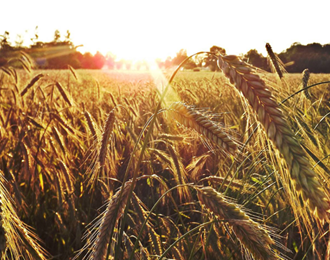Does the counting of the omer begin on 16 Nisan?
02-04-2025 - Posted by Geert-JanOriginally posted on April 07, 2023 - by Andre Piet The first version of this blog was published on April 16, 2014
Today (Friday, April 7, 2023) is ‘Good Friday’ on the Christian calendar, that is, the day on which Christianity commemorates Jesus’ death on the cross. The designation of Friday for this event is based on the assumption that Jesus lay in the grave for only two nights, while He Himself stated that He would be in the grave for three nights (Matt.12:40).
This time, however, I would like to focus not on the Christian, but on the Jewish calendar. Today is 16 Nisan (or Aviv), and in present-day Judaism this marks: the first day of the counting of the omer. It is considered to be the day described in Leviticus 23:9–16 as the day of the first sheaf of the barley harvest (omer = sheaf).
10 Speak unto the sons of Israel, and thou hast said unto them, When ye come in unto the land which I am giving to you, and have reaped its harvest, then ye have brought in the sheaf of the beginning of your harvest unto the priest,
11 and he hath waved the sheaf before the face of YAHWEH for your acceptance; on THE MORROW OF THE SABBATH the priest doth wave it.
(…)
15 And ye have counted to yourselves from THE MORROW OF THE SABBATH, from the day of your bringing in the sheaf of the wave-offering: seven complete sabbaths they are;
16 unto the morrow of the seventh sabbath ye do count fifty days…
Pharisees and Sadducees
Traditionally, there has been a controversy within Judaism over the meaning of “the morrow of the sabbath” in this context. The school of the Pharisees held the position that the sabbath here refers to 15 Nisan, that is, the first day of the Feast of Unleavened Bread. After all, on 15 Nisan “no servile work” was to be done (23:7), so in practice it was treated as a sabbath. Based on that reasoning, “the morrow of the sabbath” would then refer to 16 Nisan.
However, the school of the Sadducees taught that the sabbath here refers to the weekly sabbath, so “the morrow of the sabbath” in their view was by definition the first day of the week. A Sunday, in other words. This Sadducean school was dominant in Judaism in the first century, but modern rabbinical Judaism is primarily a continuation of the Pharisaic school. Hence, the debate over the day of the first sheaf has been settled in favor of the Pharisees. Nevertheless, the Sadducean reading is, biblically speaking, much more solid.
no fixed date, but counting days
In itself, the claim of the Pharisees that 15 Nisan functioned as a sabbath in practice is correct. For that reason alone, the crucifixion could not possibly have occurred on that day, as is often assumed. Even so, it must be acknowledged that Leviticus 23 nowhere calls the 15th of Nisan a sabbath.
Far more important is that feast days in Leviticus 23 are always explicitly tied to a calendar date—except for the day of the first sheaf and the connected Feast of Weeks. For these, not a date (calendar day) is appointed, but a day of the week: “on the morrow of the sabbath.” If the Pharisaic reading were correct, why does Leviticus 23 not simply designate 16 Nisan as the day of the first sheaf? And why then must one count seven sabbaths, up to the day after the seventh sabbath, that is, the fiftieth day (= the Feast of Weeks or Pentecost)? The very fact that this is again described as “on the morrow of the (seventh) sabbath” (23:16), and that no fixed date is given for this feast either, proves that the day is determined by counting. Why count days if there were a fixed date, as with all other feast days? The absence of a fixed date on the one hand, and the requirement to count on the other, proves that “the morrow of the sabbath” must refer to a Sunday.
an agricultural motive
Incidentally, there is also an agricultural reason why no fixed date is given for the day of the first sheaf. One year, spring simply arrives earlier or later than another. Sometimes the barley harvest is early, and sometimes a bit later. That fluctuates, and therefore a fixed date for the first sheaf cannot be determined.
conclusion
It is therefore incorrect that present-day Judaism designates 16 Nisan as the day of the first sheaf. It illustrates once again how tradition has taken precedence over Scripture. For this day was to be celebrated after the weekly sabbath. That was also the day on which Jesus rose from the dead as Firstfruit. Not on a random Sunday, but on day number one of the sabbath-counting. The day when the first sheaf of the barley harvest was waved by the priest before the face of God (Lev.23:11). The Sadducees did not believe in resurrection in general (Matt.22:23; Acts 23:8). Yet it was precisely on that day which the Sadducees (rightly!) recognized as the day of the first sheaf, that Israel’s Messiah rose from the grave as Firstfruit!

 English Blog
English Blog